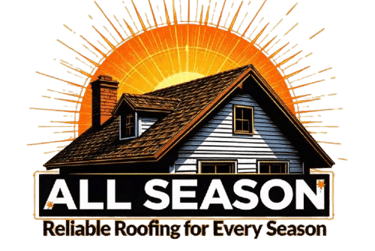Essential DIY Roof Inspections: A Homeowner’s Guide
Learn how to inspect your roof like a pro. This DIY guide helps homeowners spot damage early, prevent costly repairs, and maintain a safe, secure home.
ROOFING
5/15/20253 min read


Why Regular Roof Inspections Matter
As a homeowner, understanding the condition of your roof is crucial for maintaining the integrity of your home. Regular DIY roof inspections can help identify potential issues before they escalate, saving you both time and money. Knowing what to look for during these inspections can make a significant difference in the longevity of your roofing system.
Key Elements to Examine During Your Inspection
When conducting a DIY roof inspection, several key elements should be prioritized to ensure a thorough evaluation. First, check for missing, damaged, or curling shingles. These can compromise your roof's waterproof capability and lead to leaks. Look for granules in the gutters, which can indicate shingle deterioration.
Next, inspect the flashing around chimneys, vents, and skylights. Damaged or improperly sealed flashing can become a source of water intrusion. Additionally, make sure to evaluate the seals and gaskets for any signs of wear or degradation.
Don’t forget to assess the roof's overall structure; sagging or uneven areas may suggest structural problems that need immediate attention. Keeping an eye on these factors will enhance your roof's lifespan and protect your home’s interior.
Tools and Techniques for Effective Inspections
To conduct an effective DIY roof inspection, you'll need a few essential tools. A sturdy ladder, a flashlight, and binoculars are great starting points. If you're feeling ambitious, consider investing in a drone, which can provide a bird’s-eye view of hard-to-reach areas without the risk of climbing.
When it comes to executing the inspection, ensure you do so during clear weather for optimal visibility. Begin by examining the roof from the ground with binoculars, which will help you spot any problem areas without the need for climbing initially. Once you ascend the ladder, take a closer look at the elements identified during your ground-level assessment.
Remember to document your findings with photographs or notes, which will assist you in tracking changes over time and planning for necessary repairs or replacements.
When to Seek Professional Help
While DIY roof inspections are invaluable, they have their limits. If you uncover significant damage, such as extensive water damage, mold growth, or if your roof's age exceeds 20-25 years, it’s wise to contact a professional roofing contractor. They can provide a detailed analysis and recommend appropriate repairs or replacements that are safe and compliant with local regulations.
In conclusion, conducting regular DIY roof inspections is an essential practice for any homeowner. By staying vigilant and well-informed about your roof’s condition, you not only preserve the overall safety and comfort of your home but also maximize its value. Make it a habit to inspect your roof annually, or after severe weather events, to ensure its durability and performance. A little effort now can lead to big savings later!
More Posts:
Frequently asked questions
1. How often should I inspect my roof?
It’s recommended to inspect your roof at least twice a year—once in the spring and once in the fall. You should also check it after major storms.
2. What are the most common signs of roof damage?
Look for missing or damaged shingles, sagging areas, cracked flashing, clogged gutters, and water stains on ceilings or attic walls.
3. Is it safe to inspect my roof myself?
You can safely inspect your roof from the ground using binoculars or by checking the attic. Avoid climbing on the roof unless you have proper safety equipment and experience.
4. Do I need any tools for a DIY roof inspection?
Basic tools include a ladder (if used safely), binoculars, flashlight (for attic inspection), gloves, and a notepad or phone to record any issues.
5. What should I check inside the attic?
Look for signs of water leaks, mold, rotting wood, or light peeking through the roof boards—all indicators of possible roofing issues.
6. Can I fix minor roof issues myself?
Small repairs like replacing a shingle or clearing a clogged gutter can be DIY tasks, but for larger or high-risk issues, always call a professional roofer.
7. When should I call a professional roofing contractor?
If you notice significant damage, persistent leaks, or signs of structural problems, contact a certified roofing contractor immediately for a thorough inspection and repair.
All Season Roofs is a trusted roofing company serving New Jersey with expert residential and commercial roofing services. From installations and repairs to inspections and emergency services, we provide durable, high-quality solutions designed to protect your property through every season.
Contact
Mikee@roofingservicesxyz.com
© 2025. All rights reserved.
Business hours:
Monday to Friday
9am to 5pm


Services
